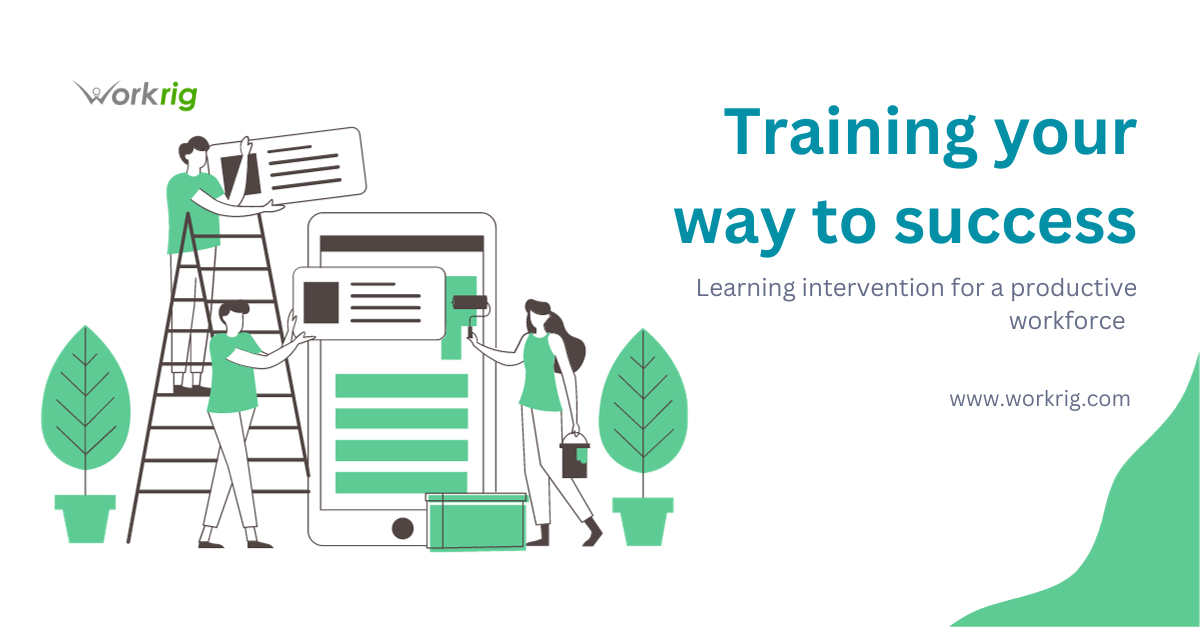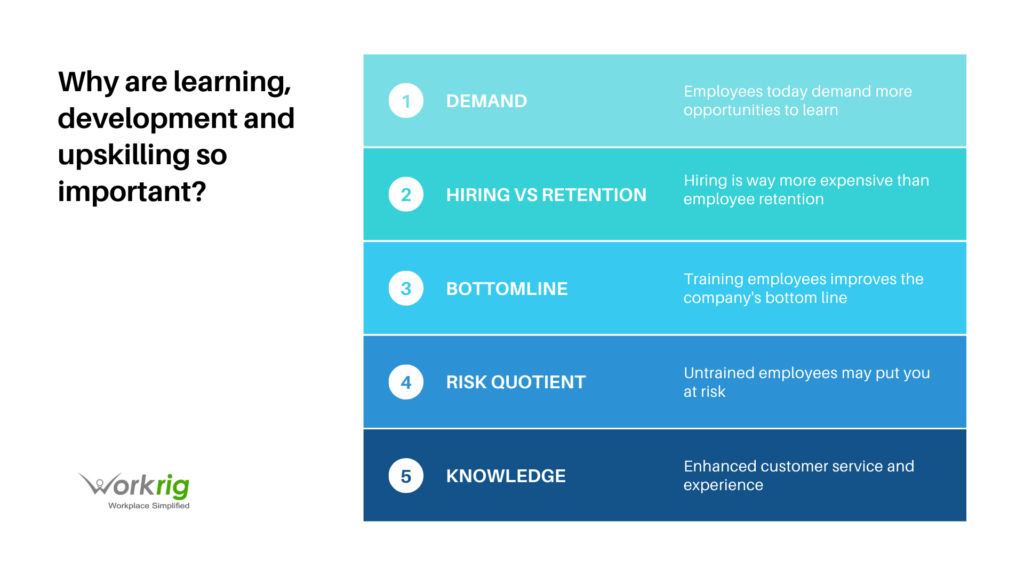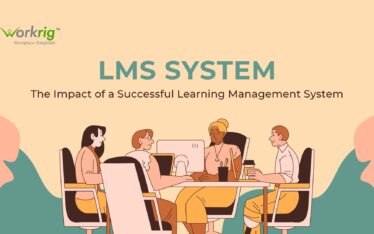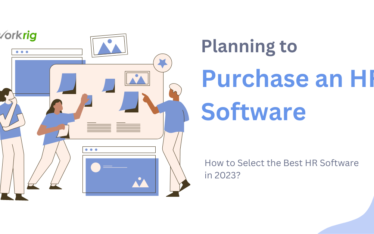Training your way to success: Learning intervention for productive workforce

Learning intervention is critical for creating and maintaining a productive workforce in today’s dynamic and competitive business environment. It can also have significant impacts on productivity. When designed and executed effectively, these interventions can improve employee performance, problem-solving skills, and job satisfaction.
Companies are actively working towards retaining their employees through learning interventions. Upskilling, learning and development not only boost employee productivity, but it is imperative to boost employee confidence and trust in their employer.
An empowered superlearning, development and upskilling enhances employee retention. In fact, 93% of employees think they will stay longer at a company when the company invests in their career development.
Why are learning, development and upskilling so important?
Well! For starters, it is very helpful for employee retention, as stated above. It also helps companies gain and retain top talent, improves productivity, and helps companies earn more profit.

1.Employees today demand more opportunities to learn and expand their knowledge base:
According to a 2016 Gallup report, 87% of millennials believe that upskilling, learning, and development in the workplace is essential, while 59% say getting opportunities to learn and grow is super important when applying for a job.
Why is that important? By the year 2025, millennials will make up a significant 50% of the US workforce. By 2030, 75% of the US workforce will comprise millennials. For companies to compete for merit and top talent, they would need to be able to invest and commit to an employee’s professional development.
2. Hiring is way more expensive than employee retention:
People switch jobs, but we inherently understand that losing productive employees is not great. According to Work Institute’s 2018 Employee Retention Report, 1 in 4 employees would leave their job, and around 77% of that turnover could be prevented by employers.
Despite the dollar value, retaining employees is feasible and more cost-effective than the costs associated with separation, recruitment, and the considerable hit to productivity. As mentioned earlier, 93% of employees believe they are more likely to stay longer at a company that invests in their development. That’s incredible.
3. Training employees improves the company’s bottom line:
There’s no doubt that employees are a company’s greatest asset. With the right team and talent in place, the sky’s the limit. With learning interventions focused on filling in knowledge gaps and upskilling employees by focusing on their employees’ strengths, companies have reported a 14%-29% increase in profit.
According to an IBM study, well-trained teams increased their productivity by 10%. As managers, our primary job is to get the best out of every employee. Timely coaching and training is a great way to empower them to succeed.
4. Untrained employees may put you at risk:
So far, we’ve focused on the advantages of learning intervention and how it reduces employee churn, attracts new hires and retains good ones, and improves companies’ bottom line by making them smarter and more productive.
Also, in the purview of learning intervention is risk mitigation through compliance and workplace training. Companies can proactively train employees to maintain and observe a safe and inclusive workplace through these compliance initiatives.
5. Enhanced customer service and experience:
Customer experience has become the backbone of a business nowadays. Positive customer experience is also a way of standing out from competitors. Customers see company employees as experts who can deliver information through effective dialogue. When a customer needs a resolution and takes the time to wait on hold or schedule a session to speak with someone, employees must be knowledgeable enough about their company’s products to have a fruitful conversation. It’s okay to say, “I don’t have the answer, but I’ll get back to you.”
However, it’s important to communicate an in-depth understanding with answers that’ll help the customers and something they appreciate. Empowering every employee through training and super learning initiatives to handle customer conversations effectively, has a remarkable impact on customer experience and customer satisfaction. According to a study by IBM, there is a 16% increase in customer satisfaction with organizations that use learning technology.
Positive Impacts of Learning Intervention
- Skill Development & Adaptation to Technological Changes: Learning intervention helps employees acquire newer skills and improve the existing ones. In a rapidly changing world, staying relevant with industry-specific skills, soft skills ( such as communication or leadership), technology, and best practices is essential for remaining competitive and productive. Employees better equipped with the right skills can perform their tasks more efficiently and effectively. Also, with businesses evolving, employees need to adapt to new processes, tools and strategies, and these learning interventions help employees stay up-to-date and flexible, making it easier to adapt to changes in the workplace.
- Enhanced Performance: Well-designed training and development programs can improve job performance by teaching employees how to perform tasks more efficiently and effectively. This leads to increased productivity and higher-quality work. Engaging in learning and development activities can boost employee morale and motivation. Employees who feel that their organization invests in their growth and development are likelier to be engaged and committed to their jobs.
- Enhanced Problem Solving & Innovation: Many learning interventions include components focused on critical thinking, creativity, and enhanced problem-solving. These skills are invaluable for addressing challenges and developing innovative solutions to improve productivity. Employees participating in such programs are better equipped to handle challenges and find creative solutions, contributing to enhanced productivity.
- Increased Employee Engagement: Learning and development activities can boost employee morale and motivation. Employees who feel that their organization invests in their growth and development are likelier to be engaged and committed to their jobs. Engaged employees are more productive, motivated and willing to go the extra mile.
- Higher Employee Retention: Employees with opportunities for personal and professional growth within their organization are likelier to stay back. Reduced turnover leads to cost savings and a more experienced workforce.Although employee retention is a crucial HR objective, learning intervention provides many other benefits that directly impact a company’s bottom line, starting with making them more productive. Also, companies that spend somewhere around $1,500 per employee annually report earning of 24% more profit than those with lesser learning & development and upskilling budgets.
- Reduced Turnover: Learning interventions can help reduce employee turnover. Employees are definitely more likely to stay with an organization that invests in their professional growth and offers opportunities for advancement. Lower turnover rates save recruitment, onboarding and training costs.
- Enhanced Communication & Collaboration: Learning interventions can also focus on improving teamwork and collaboration skills. When employees can work together more effectively, it streamlines the processes, reduces conflicts, and enhances overall productivity. These training programs often promote teamwork and communication skills. Employees who can communicate effectively and collaborate with colleagues are likelier to work harmoniously and produce better results.
- Better Decision-Making: Employees who receive training in decision-making and critical analysis are more likely to make informed decisions. This leads to more efficient decision-making within the organization.
- Cultivating Leadership: Learning intervention often includes leadership development programs. Developing leadership skills not only benefits individuals but also ensures the availability of capable leaders to guide teams and departments. Creating and grooming leaders within the organization provides effective guidance and decision-making, positively impacting productivity at all levels.
- Aligning with Organizational Goals: Well-planned learning interventions always align with the organization’s strategic goals and objectives. Employees acquiring skills and knowledge that directly support these goals can improve performance and productivity, directly contributing to the company’s success.
- Continuous Improvement (KAIZEN) & Positive Organizational Culture: Constant focus on learning and development can foster a culture of continual improvement and growth within the organization. Employees are more likely to improve and enhance their work processes and contribute to the company’s success when encouraged to learn and grow.
- Competitive Advantage: Organizations that invest in their workforce’s upskilling and development gain a competitive advantage in the marketplace. A skilled and adaptable workforce can help the company respond more effectively to changing customer needs, market conditions, and customer demands. They tend to adapt more quickly to changing market conditions and innovate more effectively.
- Risk Mitigation: Training programs can help mitigate risks associated with compliance issues, employee errors, and safety concerns. Coached and well-trained employees are less likely to make costly errors and mistakes that can impact productivity and reputation.
Wrapping Up
The increasingly changing and competitive business landscape, rising complexity, and the ever-burgeoning digital revolution are changing and reshaping the mix of employees. To add to it, perpetual uncertainty, a multigenerational workforce, and a shorter shelf life for learning intervention enable employees to learn and acquire newer and more relevant skills, hone the existing ones, enhance productivity and become better leaders.
As G.I. Joe, the famous action figure, said, “Knowing is half the battle.” Once you understand the significance of learning intervention and its place within an organization, you can take small steps to incorporate it. Even if you are running a small business, training has its place and learning never gets outdated.




